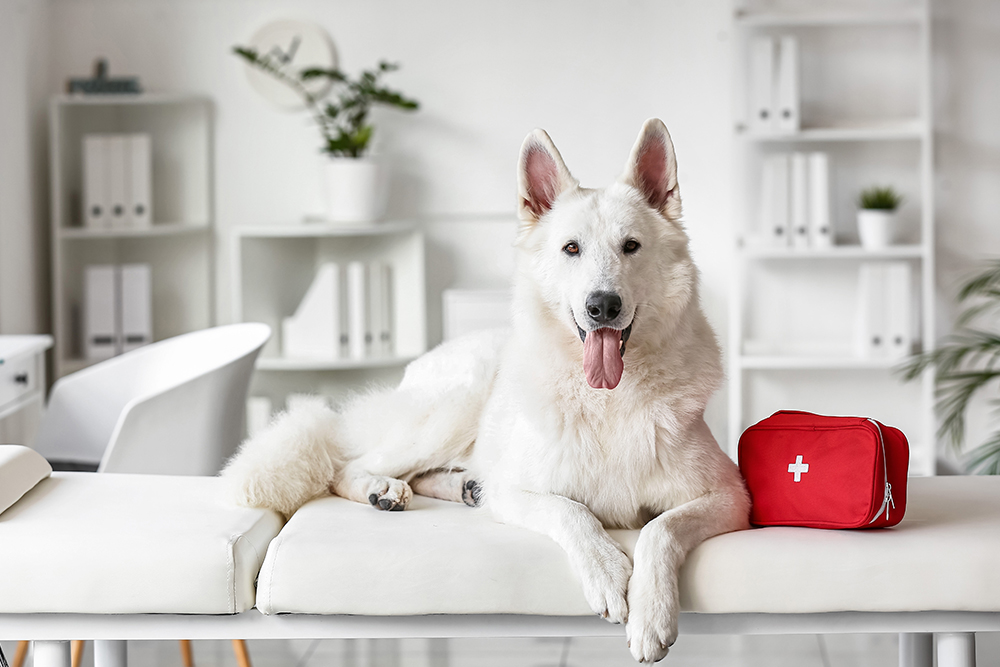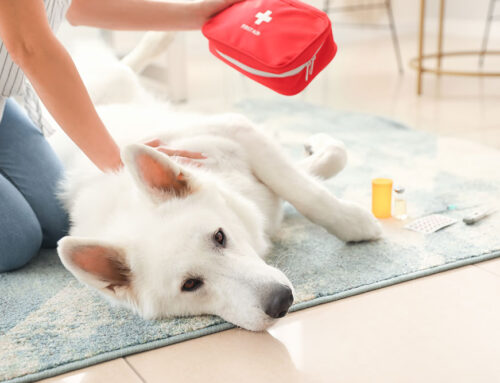Pet Emergency Preparedness: Prevention and Immediate Response
Why Pet Emergency Preparedness Matters
Accidents can happen at any time, and being prepared for a pet emergency can make all the difference in ensuring the safety and well-being of your pet. At Central Kentucky Veterinary Center in Georgetown, KY, we understand the urgency of pet emergencies and are here to help you recognize common hazards, prevent injuries, and take the right steps in an emergency.
Common Causes of Pet Injuries and Emergencies
Household Hazards to Watch For
Your home may seem safe, but many common household items pose risks to pets.
Toxic Plants – Lilies, sago palms, and tulips can cause severe reactions, including kidney failure in cats.
- Electrical Cords – Pets, especially puppies and kittens, may chew on cords, risking electrocution or burns.
- Small Objects – Coins, hair ties, socks and underwear, and rubber bands can cause choking or life-threatening blockages.
Keeping hazardous items out of reach, securing electrical cords, and monitoring your pet’s activities indoors can reduce the risk of injury.
Learn more: Essential Tips for Pet-Proofing Your Home – AAHA.
Outdoor Risks for Pets
The outdoors presents unique dangers for pets, whether in your backyard or on an adventure.
- Traffic Accidents – Unleashed pets can run into the road and risk severe injuries.
- Predators – Coyotes, hawks, and other wildlife pose threats to small pets, especially in rural areas.
- Extreme Weather – Heatstroke in summer and frostbite in winter are serious risks for pets left outside too long.
Using a leash, supervising outdoor activities, and ensuring proper shelter and hydration can help prevent these dangers.
Play-Related Injuries
Playtime is essential for keeping pets mentally and physically stimulated, but it can sometimes lead to injuries.
- Sprains and Strains – Jumping off furniture or running too hard can lead to soft tissue injuries.
- Fractures – High-impact falls or collisions can break bones, especially in small breeds.
- Foreign Body Ingestion – Swallowing tennis balls, rope toys, or rawhide chews can lead to blockages.
Choosing safe toys and supervising playtime can help minimize the risk of injury.
Preventing Pet Emergencies – UW-Madison Vet Med.
What to Do in a Pet Emergency
First Aid for Injured Pets
Knowing basic first aid can be lifesaving in an emergency.
- Stop Bleeding – Apply gentle pressure with a clean cloth to control bleeding.
- Stabilize Fractures – Keep your pet still and avoid handling the injured limb.
- Prevent Infection – Clean minor wounds with antiseptic and monitor for signs of infection.
Reference: First Aid Tips for Pet Owners – AVMA.
Recognizing When to Seek Veterinary Care
Some situations require immediate veterinary attention. Call your vet if your pet is experiencing:
- Excessive bleeding that won’t stop.
- Difficulty breathing or sudden collapse.
- Severe vomiting or diarrhea lasting more than 24 hours.
- Limping, swelling, or signs of broken bones.
- Seizures, confusion, or unresponsiveness.
Veterinary Diagnostics and Treatment Options
At Central Kentucky Veterinary Center, we offer advanced diagnostic tools to assess injuries quickly and accurately.
1. Diagnostic Testing
- X-rays & Imaging – Identify fractures, joint injuries, or foreign objects in the digestive tract.
- Bloodwork & Lab Tests – Detect infections, organ issues, or internal bleeding.
Explore Our Services.
2. Treatment Approaches
- Surgical Interventions – For fractures, foreign body removals, or emergency wound care.
- Pain Management & Recovery – Medications, cold laser therapy, and rehabilitation to speed healing.
- Infection Control – Antibiotics and wound care to prevent complications.
Preventing Pet Injuries: Tips for Pet Owners
1. Routine Veterinary Check-Ups
- Annual exams help catch early signs of illness or injury before they become severe.
- Weight management and joint care reduce the risk of orthopedic injuries.
2. Home and Outdoor Safety Measures
- Secure fences and gates to prevent escapes.
- Keep toxic foods, medications, and cleaning products locked away.
- Train pets to avoid dangerous areas like kitchens, garages, and roads.
3. Emergency Preparedness for Pets
- Keep a pet first aid kit stocked with essentials like bandages, antiseptic, and a digital thermometer.
- Have an emergency evacuation plan for your pet in case of natural disasters.
- Save the ASPCA Poison Control hotline: ASPCA Poison Control.

FAQs on Pet Emergencies
1. What should I do if my pet eats something toxic?
Call your veterinarian or ASPCA Poison Control immediately. Do not induce vomiting unless instructed.
2. How can I tell if my pet has a broken bone?
Limping, swelling, or refusing to put weight on a limb are key signs. Keep your pet still and call your vet.
3. What are the signs of shock in pets?
Rapid breathing, pale gums, weak pulse, behavior change, limping, licking, and lethargy indicate shock and require immediate veterinary care.
Keeping Your Pet Safe & Healthy
By staying informed and prepared, you can prevent injuries, recognize emergencies early, and act quickly to protect your pet’s health. Regular veterinary visits, proper training, and home safety measures are key to reducing the risk of pet injuries.
For expert emergency care and preventative veterinary services, Central Kentucky Veterinary Center is here for you.
Schedule an appointment or call us for immediate assistance.







Leave A Comment